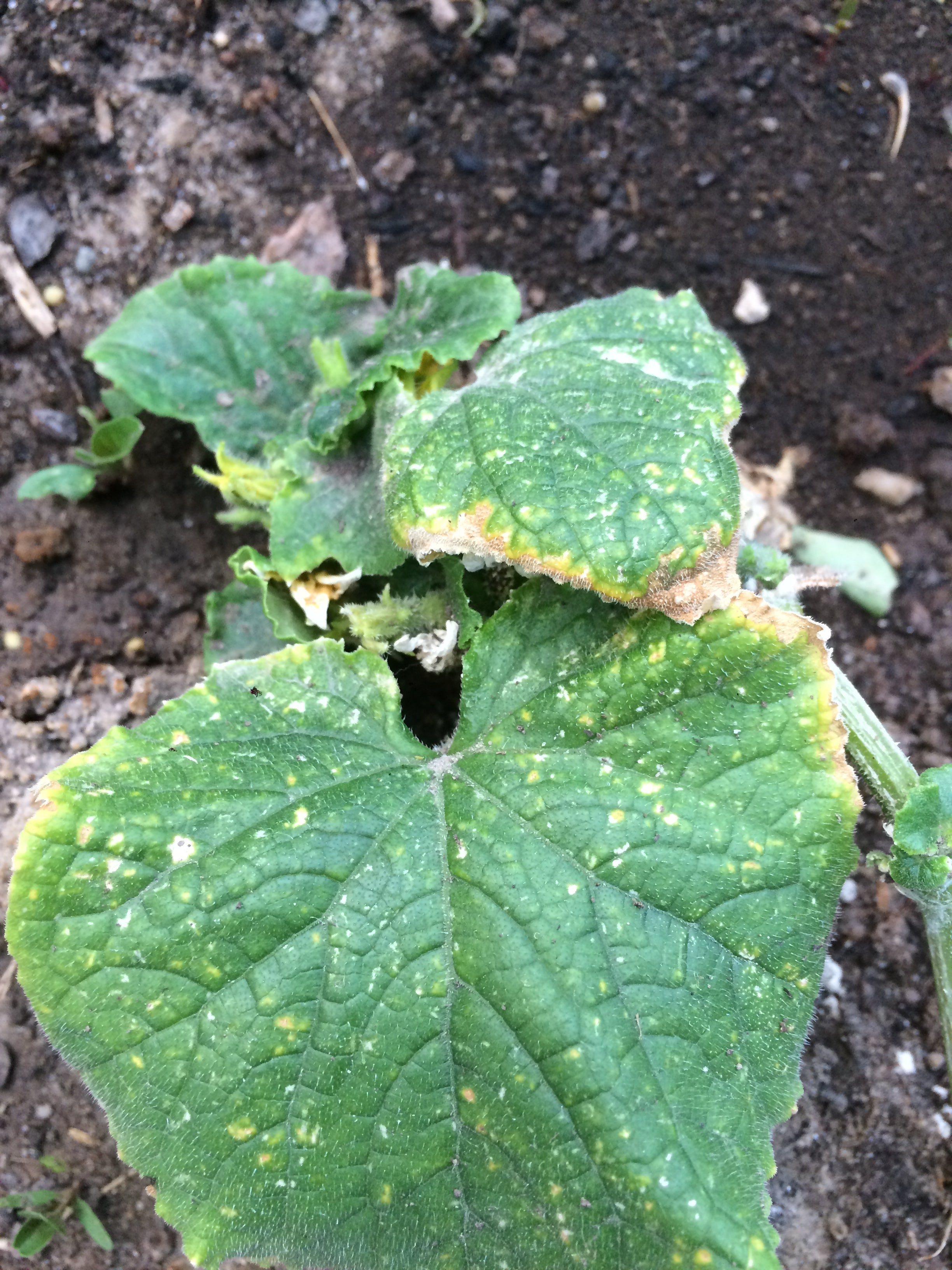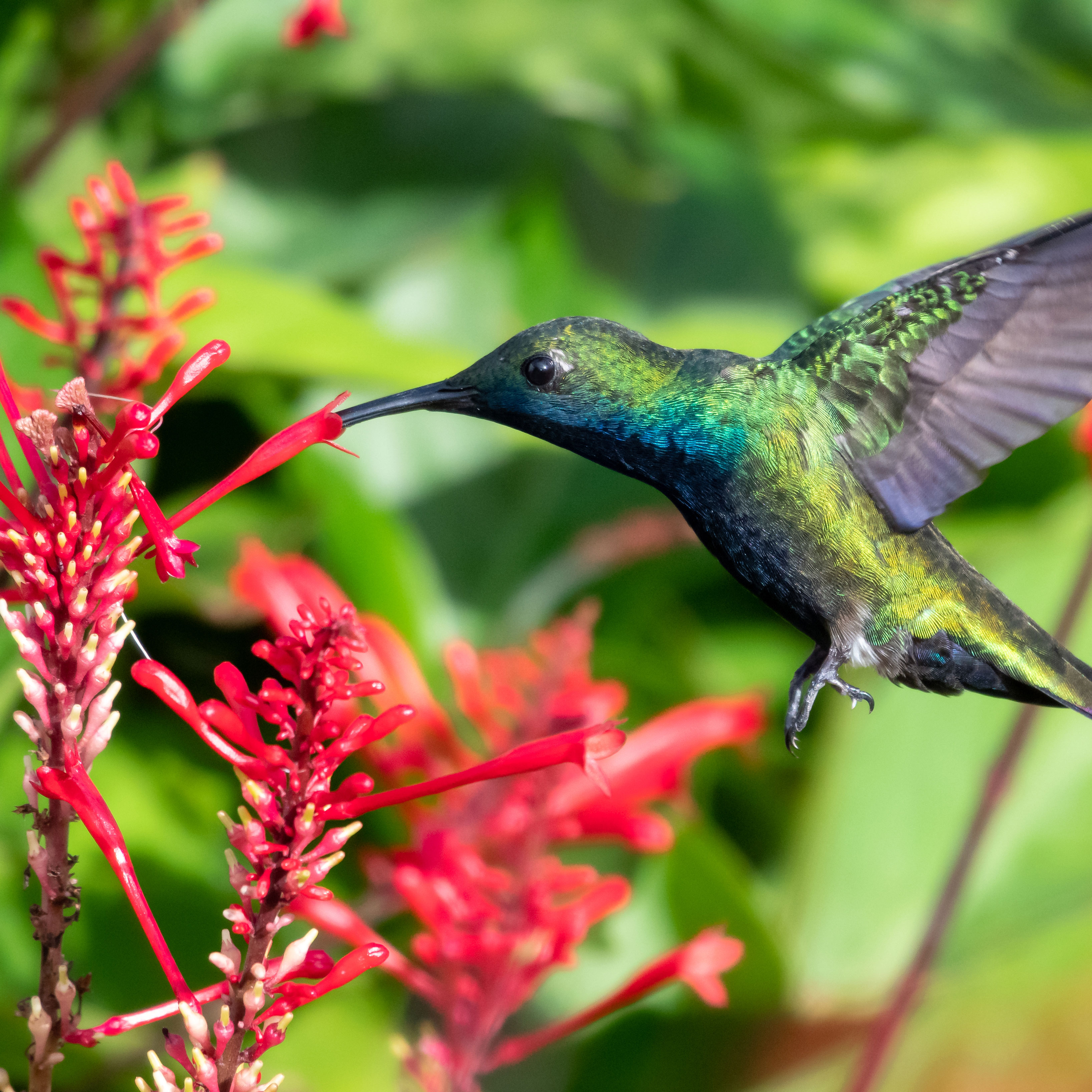Cucumber Leaf Spot: Treating Angular Leaf Spot In Cucumbers


Cucumber is a popular vegetable to plant in home gardens, and it often grows without issue. Sometimes though, you see bacterial leaf spot symptoms and have to take action. When you notice small circular spots on the leaves, you are probably dealing with cucumber leaf spot. Read on for information about this disease and how to start treating angular leaf spot in cucumbers.
About Cucumber Leaf Spot
Cucumber leaf spot is also called angular leaf spot of cucumber. It is caused by the bacterium Pseudomonas syringae pv. lachrymans. You’ll find pseudomonas syringae on cucumbers but also on other vegetable including zucchini squash and honeydew melon.
Bacterial Leaf Spot Symptoms
Pseudomonas syringae on cucumbers causes dark spots on the leaves. Look closely and you’ll find that they are water-soaked lesions. In time they will grow into large, dark blotches. These blotches stop growing when they encounter major veins in the leaves. That gives them an angular appearance, which is why the disease is sometimes called angular leaf spot. If the weather is wet, these spots will be covered over by a white substance. It dries into a white crust, tearing the foliage and leaving holes.
Treating Angular Leaf Spot of Cucumber
Pseudomonas syringae on cucumbers proliferate during wet weather and disappear when it is dry. There lies your best course in treating angular leaf spot of cucumber: prevention. Since cucumber leaf spot disappears with a couple weeks of dry weather, it would be nice to be able to control the weather. While you can’t go that far, you can adopt the best cultural practices for your cucumber plants. That means to irrigate them in a way that doesn’t wet their leaves. In addition, don’t work with your cucumbers in wet weather or harvest the vegetables in wet weather. You could be spreading pseudomonas syringae on cucumbers to other cucumbers or other vegetable plants. It also helps to buy resistant cucumber varieties and keep your garden free of fallen leaves and other debris. Limit nitrogen fertilizer and don’t grow the same veggies in the same place for more than a few years. You can also apply a recommended bactericide when you notice the first bacterial leaf spot symptoms. This will help you in treating angular leaf spot of cucumber.
Gardening tips, videos, info and more delivered right to your inbox!
Sign up for the Gardening Know How newsletter today and receive a free copy of our e-book "How to Grow Delicious Tomatoes".

Teo Spengler is a master gardener and a docent at the San Francisco Botanical Garden, where she hosts public tours. She has studied horticulture and written about nature, trees, plants, and gardening for more than two decades. Her extended family includes some 30 houseplants and hundreds of outdoor plants, including 250 trees, which are her main passion. Spengler currently splits her life between San Francisco and the French Basque Country, though she was raised in Alaska, giving her experience of gardening in a range of climates.
-
 Terrifically Tubular Flowers For Hummingbirds: 9 Tube-Flowered Plants To Attract Hummers
Terrifically Tubular Flowers For Hummingbirds: 9 Tube-Flowered Plants To Attract HummersGrowing tubular flowers for hummingbirds helps you create the optimum feeding conditions for your winged friends. Here are nine tubed delights for hummers
By Tonya Barnett
-
 How To Grow Hydroponic Tomatoes For Fresh Indoor Harvests – No Soil Required
How To Grow Hydroponic Tomatoes For Fresh Indoor Harvests – No Soil RequiredLearning how to grow tomatoes in water is easy and allows you to harvest fresh-home-grown produce in every season without any mess.
By Ellen Wells